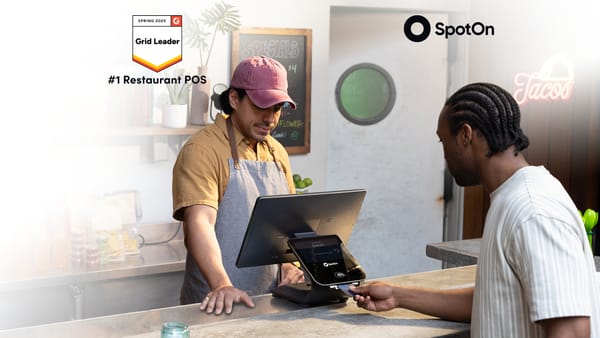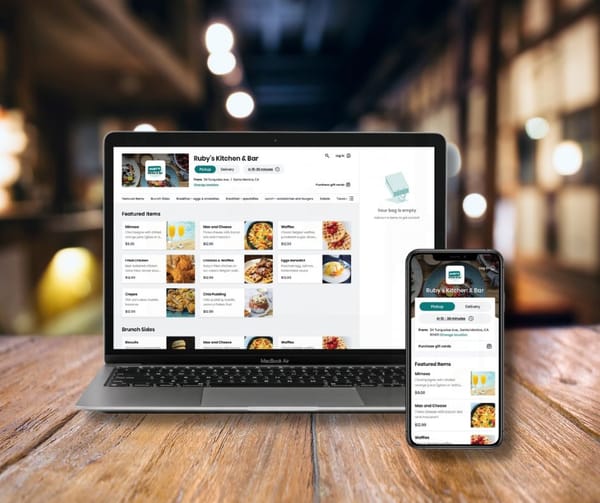Data inventory is a comprehensive record of all the information your restaurant holds. Therefore, a data inventory checklist, featuring key operational questions, stands as a powerful tool to help you realize your restaurant's full potential. After all, a modern point-of-sale (POS) system puts a wealth of data at your fingertips that can spark smoother operations and a healthier bottom line.
According to a survey of more than 2,400 U.S. small-business owners by Guidant Financial and the Small Business Trends Alliance, 1 in 4 respondents identified time management or administrative work as one of their top challenges. However, robust reporting capabilities paired with other key restaurant technologies can deliver efficiencies and restore order to your day.
Using data to drive decision-making.
With quick and easy access to prominent and easily accessible reports, such as hourly sales, the daily sales recap, product mix report, and sales snapshot, you can answer important questions to fuel a more successful restaurant operation. Consider the following:
1. Am I optimizing my labor?
On an hourly sales report, you can compare your sales to your labor costs. This will help you spot places where you might be overspending on labor and alter your labor schedules accordingly. For instance, if sales consistently dip between 2 p.m. and 4 p.m., then you can probably reduce staffing levels during those hours. With the average hourly rate of non-managerial restaurant workers in the U.S. now topping $15, according to the Washington Post, it's important that you carefully monitor your staffing levels and evaluate staff productivity.
2. What are my top-selling and high-margin items?
A product mix report will quickly highlight your top-selling items while the food cost percentage figure will help you identify your highest-margin items. Combine these together and you can re-engineer your menu and redesign your promotions or marketing to highlight these popular and profitable items that please your guests and support your bottom line.
3. Am I creating smart, relevant promotions?
Looking at the hourly sales report or daily sales recaps, you can get an accurate, quantifiable look at your restaurant's slowest periods, whether that's a daypart or even specific days. Armed with that information, you can then create marketing promotions thoughtfully designed to boost traffic during those slow periods. Happy hours are a great example. If traffic and sales are consistently lagging on weekdays between 4 p.m. and 6 p.m., then develop a happy hour promotion featuring small plates of your most popular (and profitable) food and drinks to entice visitors.
4. How are my guests ordering?
The COVID-19 pandemic spurred a significant rise in off-premises dining. As noted by the National Restaurant Association, about two-thirds of adults are ordering takeout or delivery for dinner at least once a week. Online ordering soared during the pandemic, as well. Pulling this data from your daily sales recap and understanding guest ordering trends at your restaurant can help guide your purchasing, uncover potential operational enhancements, and inform tech investments that can streamline and simplify online orders, delivery, and carryout for your guests and staff.
5. What are today's most pressing problems?
From voids to open tables or tabs, a sales snapshot report provides a real-time look at your restaurant operation so that you can fix problems on the fly and run a more guest-pleasing operation. With a quick visit to the kitchen, you can alert cooks to any problems and remedy situations so you're not losing money and disappointing guests.
Using reports to improve restaurant performance.
Beyond some of the prominent, reports mentioned above, a modern POS solution will have dozens of additional reports you can use to run a more efficient, profitable, and guest-centric operation.
- Void report. A void report will show you the money that's been lost due to voided items and help you understand why orders were voided, when, and by whom. With this, you can tighten up operations in a specific area, re-train staff to correct frequent yet avoidable missteps, or seek a new supplier for an underwhelming product.
- Sales contest report. With a sales contest report, you can incentivize staff to sell your most profitable items or to encourage margin-friendly drink sales with every purchase. With real-time reporting, you can share up-to-the-moment results and motivate staff members to push forward.
- Payroll summary. A payroll summary will provide a clear look at staff earnings. You will see who is working the most overtime, and you can identify which worker categories are capturing the most pay. These data points can help you find new restaurant technologies that foster efficiency and allow you to take a deeper look at your scheduling practices.
These readily available reports and many others provide important data insights you can leverage to inform restaurant operations. Whether it's stagnant marketing or an oversized menu, hefty labor costs or sluggish sales, the real-time data from your POS system provides objective clues you can transform into actionable steps to improve your restaurant's performance.
Studying data inventory to boost results.
Where do you find your restaurant is struggling to reach its potential? What hurdles are you running up against? What's causing you stress? Blending some earnest reflection with your restaurant's existing data will help you create a relevant data inventory checklist that positions you to unlock valuable, results-oriented answers.
With immediate access to robust reports from a smartphone, tablet, or computer, you have a path to better understanding the inner workings of your restaurant. There's no guessing or bias involved—just factual information that clearly articulates your restaurant's performance. This way, you can make intelligent, calculated decisions designed to uplift sales and increase efficiencies.












